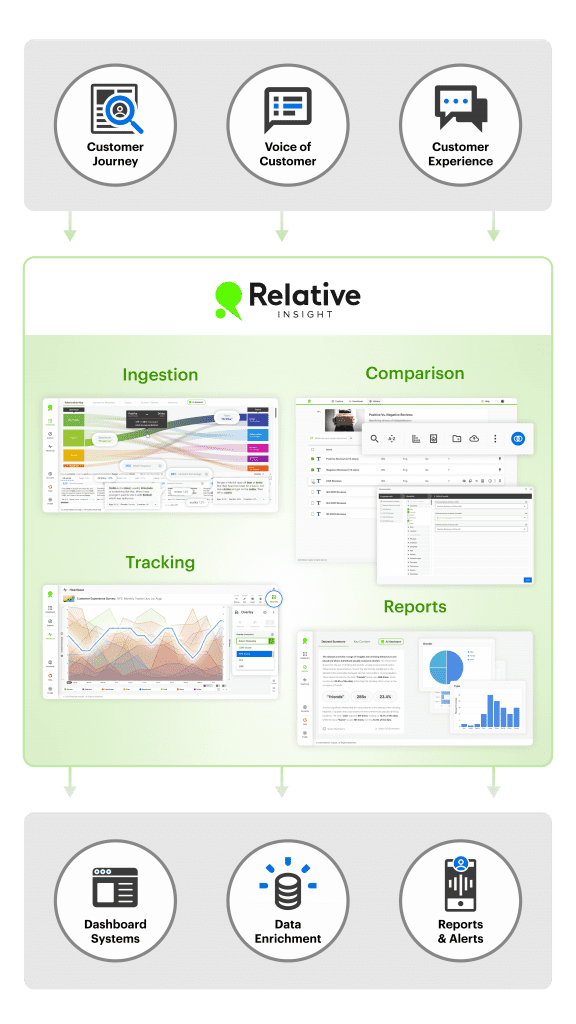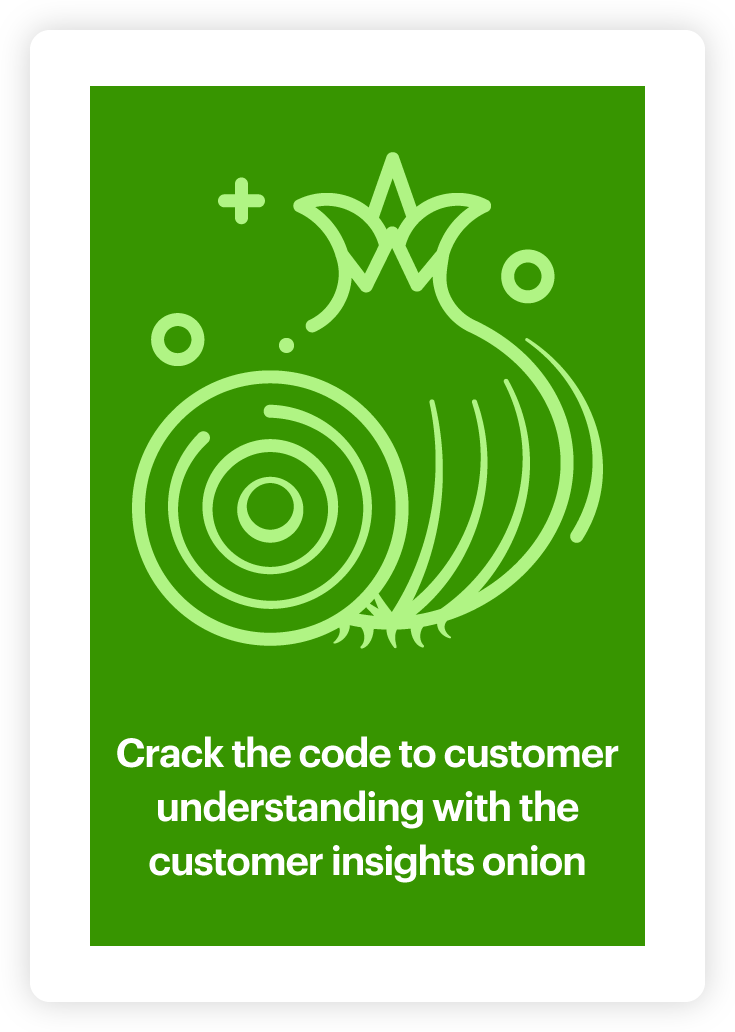The layered approach to AI in Relative Insight: Understanding the ‘why’ behind your customer engagement metrics

In today’s data-driven world, metrics for customer engagement – such as satisfaction scores, conversion rates, and retention figures – are more important than ever. But while these metrics tell you what is happening, they don’t always explain why.
That’s where Relative Insight comes in. We’re applying the power of artificial intelligence to transform how businesses interpret and act on text data, revealing the reasons behind the numbers. By employing a layered approach, we select the right analytic technology for each stage of our analysis, with generative AI (genAI) as the final, crowning layer that brings all these insights together into comprehensive reports.
How do we do it? I want to explain the diverse analytic technologies integrated into our platform and how each one helps you understand why your key business metrics are moving or staying the same.


The three pillars of input data
In the CX world, there are three categories of data that feed into the Relative Insight platform.
- Customer journey mapping (CJM): Understanding the steps your customers take as they interact with your brand. This mapping is crucial for uncovering the touchpoints that influence key metrics.
- Voice of the customer (VoC): Capturing direct feedback from customers, including comments, reviews, and survey responses. This data is rich with insights that can explain changes in engagement metrics.
- Customer experience (CX): Gauging the overall experience customers have when interacting with your brand, including chatbots and call centers. These experiences are often directly linked to your most important metrics.
These data categories provide the raw material that our advanced AI techniques process, ensuring that the nuances of customer interaction are accurately captured and analyzed. By understanding the text data associated with your metrics, we help you uncover the underlying reasons behind their performance.
The foundation: Diverse AI technologies for varied needs
Our platform leverages a range of analytic technologies, each chosen for its specific strengths in explaining the why behind your metrics:
- Machine learning and NLP: This forms the initial layer, focusing on the accurate identification and classification of text data, ensuring that the most relevant information is highlighted.
- Transformers: These models are critical in understanding the nuanced meanings of words, ensuring that every piece of text is interpreted correctly. This helps explain why customers feel a certain way.
- Sentiment analysis & named entity recognition: This layer pinpoints the emotional tone and identifies key entities within the text, providing a deeper context for analysis. These insights directly relate to customer satisfaction and engagement metrics.
- Statistical analysis for comparative insights: Here, we identify significant differences and similarities across datasets, helping to understand shifts in customer sentiment or behavior. This is vital for explaining why your metrics might be improving or declining.
The final layer: Generative AI to bring key metrics to narratives with minimal friction
After processing and analyzing the data with the above technologies, we apply genAI as the final layer. This advanced AI technique synthesizes the insights and metrics gathered during earlier stages into comprehensive, user-friendly reports.
These reports don’t just present a narrative — they show the key metrics and evidence in the story, providing the why that is so crucial for making informed business decisions.
Integration and distribution
The insights generated by Relative Insight are valuable not just within our platform, but across various other business tools and systems:
- Dashboard tools: Integration with platforms like PowerBI and Tableau allows for real-time visualization of insights, helping you see why your metrics are changing at a glance.
- Data enrichment: The metrics and insights that Relative Insight produces can be fed back into your business systems. For example, we can enhance segmentation databases with detailed customer insights.
- Market research coding: Our platform can feed data into coding frameworks used for market research, streamlining the analysis process and helping explain why certain trends emerge.
- GenAI systems: Our insights can be used as inputs into other generative AI systems, enhancing their performance with real-world metrics that provide evidence to conclusions.
- Customer systems enrichment: CRM and VoC systems benefit from the enriched data provided by our platform, offering deeper explanations of customer behavior and the ability to take targeted action.
- Automatic alerts and scoreboards: Stakeholders can receive targeted alerts for any reasons their CX metrics are moving, along with scheduled scoreboard reports summarizing key insights; allowing them to take action immediately to improve the business.
The right tool for the right job
At Relative Insight, the strength of our platform lies in the careful selection and layering of analytic technologies. By picking the right tool for the right job, we ensure that our insights are as accurate and actionable as possible.
The final touch comes with genAI, transforming raw data into narrative-rich reports that don’t just show you what’s happening—they tell you why.
This layered approach not only enhances the precision of our analysis but also ensures that every piece of data is utilized to its fullest potential, providing clear and actionable insights that help businesses understand the reasons behind their key metrics and stay ahead in a competitive landscape.
